A Walk Across Dartmoor - part 1
All the best walks start and end at a pub and a popular place to aim for is the Warren House Inn. Located in the heart of Dartmoor, a national park in the county of Devon in England’s West Country, it has been a stopping point for thirsty travellers since the mid eighteenth century. The fire, according to tradition, has never been allowed to go out – probably out of necessity for the inn is isolated and exposed on a high windswept plateau.

Two miles to the south-west of the inn is the village of Postbridge, famed for its ancient clapper bridge, first mentioned in 1380 and reached by a track opposite the pub. It passes the remains of habitation for Dartmoor once had a tin mining community and these are just some of the signs of this now vanished industry throughout the moor. The mining is thought to have predated the Romans, flourished during medieval times and also the nineteenth century before finally ending in the mid-1900s.


Spring comes late to this harsh environment: the few trees grow slowly and stunted. When the moor flowers many different species of butterflies can be seen.
As with many parts of Britain where rock lies close to the surface, drystone walls are a feature. Unlike the soft limestone walls of the Cotswolds which use small pieces of thin, flat stone, Dartmoor’s are granite and some of the stones massive. It is hard to conceive how they were built but the huge slabs foreshadow those that are to be found at Postbridge.
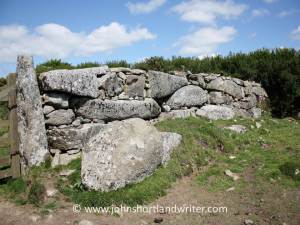
Crossing the East Dart River, the clapper bridge at Postbridge is perhaps the best known of all of these bridges in England although there are more than two hundred on Dartmoor alone. Thought to have been built to allow carts to carry tin off the moor, the bridge is over four metres long and two metres wide. Some of the stones weigh more than eight tons. The village consists of a few houses, a pub and a post office and is a favouriteplace to stop for a traditional Devon cream tea.
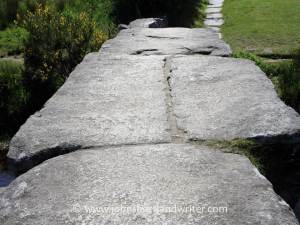
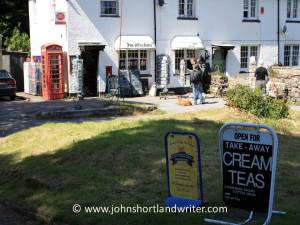
A riverside path heading north from the village leads into the heart of the moor towards the next stopping point, the prehistoric Grey Wethers stone circle, featured in part two of this blog.
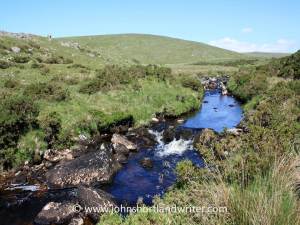


Two miles to the south-west of the inn is the village of Postbridge, famed for its ancient clapper bridge, first mentioned in 1380 and reached by a track opposite the pub. It passes the remains of habitation for Dartmoor once had a tin mining community and these are just some of the signs of this now vanished industry throughout the moor. The mining is thought to have predated the Romans, flourished during medieval times and also the nineteenth century before finally ending in the mid-1900s.


Spring comes late to this harsh environment: the few trees grow slowly and stunted. When the moor flowers many different species of butterflies can be seen.
As with many parts of Britain where rock lies close to the surface, drystone walls are a feature. Unlike the soft limestone walls of the Cotswolds which use small pieces of thin, flat stone, Dartmoor’s are granite and some of the stones massive. It is hard to conceive how they were built but the huge slabs foreshadow those that are to be found at Postbridge.

Crossing the East Dart River, the clapper bridge at Postbridge is perhaps the best known of all of these bridges in England although there are more than two hundred on Dartmoor alone. Thought to have been built to allow carts to carry tin off the moor, the bridge is over four metres long and two metres wide. Some of the stones weigh more than eight tons. The village consists of a few houses, a pub and a post office and is a favouriteplace to stop for a traditional Devon cream tea.


A riverside path heading north from the village leads into the heart of the moor towards the next stopping point, the prehistoric Grey Wethers stone circle, featured in part two of this blog.


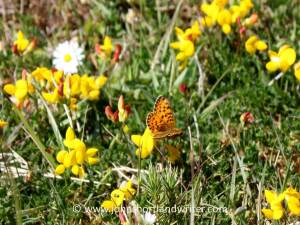

Comments
Post a Comment